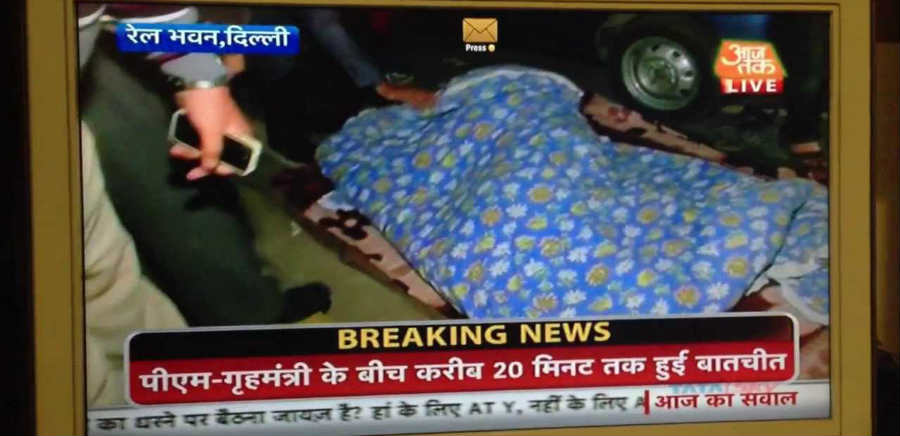BY SAEED NAQVI
For the first time in my recollection, the Pakistan Foreign Minister visiting New Delhi will attract more notice than US Secretary of State, Hillary Clinton did exactly a week earlier.
There could be several reasons for this, the most compelling being that Hina Rabbani Khar is the first woman Foreign Minister of Pakistan. At 34, she also happens to be the youngest ever. Then, the Clinton visit coincided with the 24X7 focus on Rupert Murdoch’s trial by fire, taking the spotlight away from her.
It is just as well that the Secretary of State’s visit was in a low key, investing it with realism divorced from the hype which generally imparts to Indo-US relations exaggerated expectations.
The US has, in its history, vacillated between global dominance and isolation. A phase of inwardness may be in the cards.
Everyone knows the Civil nuclear deal is in a bit of a jam and Clinton almost said as much. There was nothing new in the US supporting India as a Permanent member of the UN Security Council. What was heartening was the imagery she used for India’s Election Commission: “it is the global gold standard for running elections.”
Without in any way offending China she spelt out roles for India in theaters of Chinese proximity – Pacific and Central Asia. India “straddling the waters from the Indian to the Pacific Ocean is, with us, a steward of these waterways”. Will this region “build the regional architecture of institutions and arrangements to enforce international norms on security, trade, rule of law, human rights and accountable governance?” Chinese know how to decode “human rights”!
She then talks of interlocking triangles: US, Japan (a treaty binds them) and India, also US, China and India. Similar co-operative linkages are sought with Afghanistan, Pakistan and India. What Clinton sketched at the library in Chennai is a comprehensive document of intent.
It is in this context that she spelt out a scenario for the Af-Pak region after US withdrawal. “We and the Afghans are making progress on a new strategic partnership declaration that will define our relationship after 2014.”
What the US seeks is in fact a contradiction in terms: how to stay on in Afghanistan after the withdrawal of US troops?
This explains extensive construction at the Consulate in Mazar-e-Sharif and at US bases. According to Russians, who know the terrain well, the US has 30 bases in Afghanistan of which the ones in Bagram, Jalalabad, Kandahar, Helmand, Shindand and Mazar-e-Sharif are, by the sheer volume of masonry, not temporary. There is nothing new in all of this. US diplomats in the Af-Pak have for the past five years been fairly vocal about their being in the region for the long haul. Yes, the counter insurgency phase maybe getting a new look, but the entire question of the US withdrawing from Afghanistan is, in my view, an open one.
Yes, there will be photo ops of Marines clambering onto departing aircraft or Gen. David Petraeus looking pensive in a helicopter about to take off. These would be effective visuals on US TV preparatory to the 2012 Presidential election but only if viewers had interest left in anything other the plummeting economy – at home, across the Atlantic or the Pacific where Japan has yet to find its feet after the nuclear disaster.
Some things are not likely to happen soon. The agreement that Americans seek with the Afghans on the bases they wish to maintain in the country is not a document President Hamid Karzai can ink in a hurry given the anti American sentiment. A puzzle for the Americans seems to be “Karzai’s state of mind”. Yes, the Americans are unpopular but not as much as the Pakistan army looking for “strategic” depth in Afghanistan. This is my personal observation after visiting Afghanistan. By playing both sides of the street, the Pakistan Army has lost credit both ways – with the Americans and the Afghans.
The Pakistan Foreign Minister will have met the US and Chinese Foreign Ministers in Bali before arriving in New Delhi. Who knows, Ms. Khar may begin to open up many regional possibilities if she is able to gauge the sincerity with which Dr. Manmohan Singh and his team contemplate Indo-Pak relations in a world changing at dizzying speed.
(Saeed Naqvi is senior Indian journalist, television commentator, interviewer, and a Distinguished Fellow at Observer Research Foundation. Mr. Naqvi is also a mentor and a guest blogger with Canary Trap)
